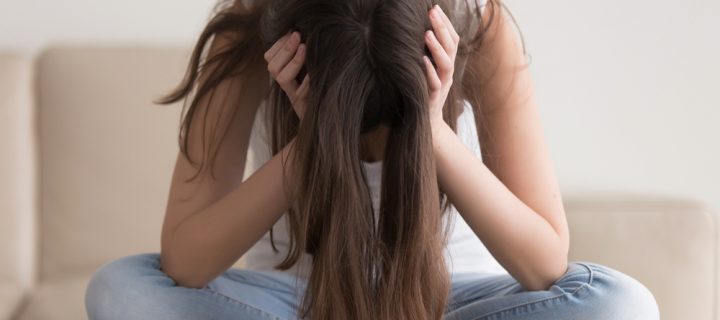Research shows many teens felt desperate and went through difficult times during the pandemic.
The pandemic has affected the lives of just about everyone. From masking, to testing, battling sickness and loss, and dealing with economic fallout, the past couple of years haven’t been an easy ride. Maintaining a positive mental outlook throughout this period has been difficult. It’s hard to say who has had it the worst but research is showing that highschool students in particular have been facing an uphill battle. School closures, long lockdowns, and social distancing requirements have led many of them to feeling desperate about their future.
The Centers for Disease Control and Prevention (CDC) conducted a survey between January and June of 2021 among about 8,000 high school students in the US. The survey was related to students’ emotional and psychological well being. As an adapted version of the Youth Risk Behavior Survey System (YRBSS), this survey was re-crafted in collaboration with the CDC’s COVID-19 Response Team and its Division of Adolescent and School Health.
(For some added context: the YRBSS began being administered every two years in 1990. It asks youth to answer questions related to their behavior. The survey is used to monitor health behaviors that are known to contribute to social problems as well as death and disability in youth in the US).
More than ⅓ of highschool students in the US had mental health trouble during the pandemic
The survey found that 37% of high school students reported having poor mental health during at least half of the pandemic. In addition, over 44% of the same group said they suffered from persistent sadness. They also had feelings of hopelessness that prevented them from participating in some of their usual activities. Quite sadly, about 1 in 5 said they had seriously considered suicide. A shocking 9% of students surveyed actually reported having attempted suicide during the pandemic.
More than ½ of students reported emotional abuse by a guardian
Being at home with their family during pandemic lockdowns and school closures placed many students in tense situations. Research shows adults were dealing with the increased pressures of working remotely, (or not working at all), coupled with at-home schooling. Their pressure was felt by teens. Over half of all students surveyed said they experienced emotional abuse coming from an adult in their home during the pandemic.
Related: All About Canada’s New Inhaled Vaccine
About ¼ of students said they went hungry
With reduced access to school lunches and funded snack programs, many students also went hungry. Closed schools and pandemic layoffs led to one quarter of students saying they went hungry during the pandemic. This is compared to about 1 in 7 children living in households without enough food in the US in 2019.
All of this adds up to longterm problems
Obviously this research points to an added need for help. Not having enough food to eat, being emotionally abused, and feeling depressed and desperate obviously adds up to many concerns. For starters, many students reported being unable to complete their school work due to their life conditions during the pandemic. But it goes beyond assignments and essays. Psychologists and social workers are quick to point out the difficulties will have a ripple effect for years to come.
Mental health problems now lead to risky behavior down the road
Mental health problems in teens are known to lead to increased risky behavior. This includes substance abuse. Researchers found that one third of high school students reported using alcohol, tobacco, misused prescription opioids, and marijuana more during the pandemic than previously.
“Mental health problems in youth are often associated with other behavioral risks such as drug use, experiencing violence and higher risk sexual behaviors,” said Dr. Jonathan Mermin, director of the CDC’s National Center for HIV, Viral Hepatitis, STD and TB Prevention. “And these problems can have lasting negative effects well into adulthood.”
The American Rescue Plan Act is bringing more psychologists to the classroom
What is being done about this situation? The American Rescue Plan is one avenue trying to help. Passed in March 2021, the act covers many things including $170 billion in school funding. Some of this, according to the American Psychological Association, is being used to hire mental health workers in schools. Psychologists are being brought in and teachers are being trained in some psychological principles in order to be better equipped to help their students deal with increased anxiety and depression.
“As psychologists, we don’t just want to bring in interventions that only we as experts can deliver,” said Kathryn H. Howell, PhD to APA.org. Howell is an associate professor of child and family psychology at the University of Memphis. She is also chair-elect of APA’s Committee on Children, Youth and Families.
“We need to make it sustainable by teaching those on the front lines how to equip kids with the skills they need to thrive,” she stated.
If you think your child needs help with their emotional or mental health, talk with your family doctor. You can also schedule an appointment to speak with a school counselor. These professionals are trained to be your first point of contact and can help guide you to more specific assistance.
Looking for help online? Check out Mental Health America for more resources and information on how to get started.
photo credits: fizkes/Shutterstock.com











